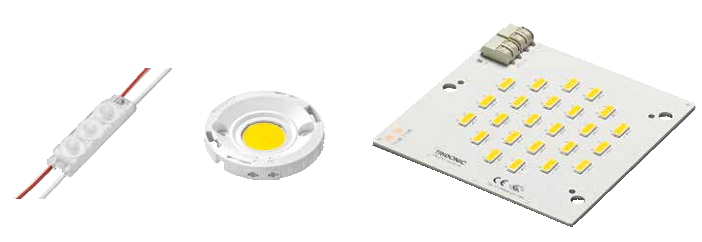LED is a semiconductor based light source which significantly differs from conventional light sources. Unlike conventional luminaires where light is produced by a filament or gas, LEDs are tiny electronic chips made of specific semiconductor crystals. This principle of light generation offers many advantages and new opportunities.
The main advantages of LEDs include long lifetime, high efficiency, environmental friendliness, good colour rendering and a wide variety of design options.To make use of its full potential, light designers must be familiar with these new and specific characteristics of the LED. This document explains the most important concepts, techniques and possibilities.
Parameters to determine the light colour
The different colour spaces of light
The light generated by an LED module can be described by its parameters colour rendering, colour temperature, chromaticity coordinate and colour consistency. The following section explains the relation and differences.
Colour rendering
The Colour Rendering Index (CRI) is a measure that describes how well a light source reproduces the different colours of an illuminated object. The CRI is determined using a reference colour chart with 14 standardized test colours. Depending on the deviations between the secondary spectra and the test colours, the light source is assigned to a particular CRI. If the colours are reproduced badly, the deviations are large and the CRI is low. With good colour rendering the deviations are small and the CRI is high.
The maximum value of the CRI is 100. This corresponds to a colour rendering without any deviation. Sunlight has a CRI of up to 100, a white LED lies between 70 and 98. For practical use, this means that LED lighting units with a higher CRI reproduce the illuminated colours more naturally and more pleasing to the human eye. In certain applications (e.g. the lighting of works of art in museums), this point is of crucial importance.
Colour temperature
The colour temperature is a measuring unit that describes the colour of a light source. It is measured in Kelvin (K). The most common luminaires have colour temperatures below 3,300 Kelvin (warm white), between 3,300 and 5,000 Kelvin (neutral white) or above 5,000 Kelvin (daylight white).
The colour temperature is determined by comparing the light source with the colour of a black body radiator. This is an idealized body which absorbs all light and has no reflected radiation. If a black body radiator is slowly heated, it passes through a colour scale from dark red, red, orange, yellow, white to light blue. The colour temperature of the light source is the temperature in Kelvin where the black body radiator shows the same colour. If you transfer the different colours of the black body radiator into the chromaticity diagram and connect them, you get a curve which is referred to as “Planckian locus” or “Black body curve”.




